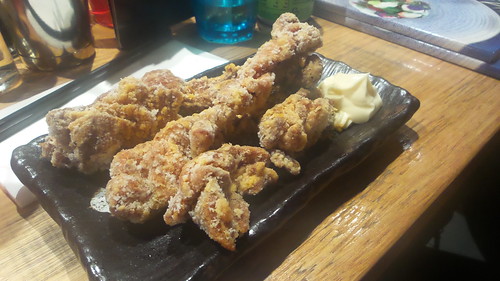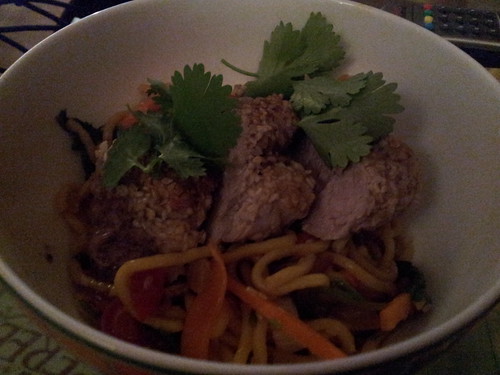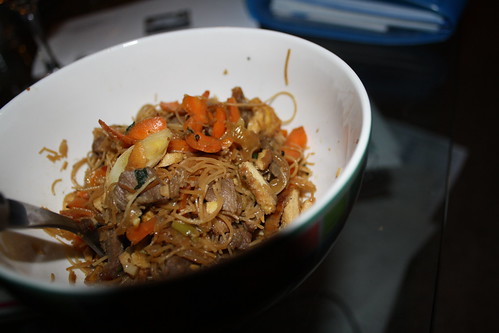 a rather massive bowl of spicy noodles
a rather massive bowl of spicy noodles
Disclaimer: I was a guest at a blogger dinner at Ryo’s Noodles
A couple of weeks ago I was invited to a dinner at Ryo’s Noodles on Gouger Street. Being a die-hard carb junkie I had no choice but to attend. However, I’ll let you in on a little secret. I’ve been to Japan but once. And that ‘once’ was a lay-over at Narita Airport. I was really lucky in that I was travelling with a friend with a strong command of Japanese and we spent an excellent night out in Narita eating eel and drinking beer. But that is where my experience of Japanese food as cooked in Japan starts and ends. I love soba noodles (on that journey I flew JAL and cold soba noodles were offered at every meal – I was in heaven), I’m less keen on udon and ramen tread a happy middle ground.
Now we have my non-existent Japanese food critiquing credentials out of the way …
Ryo’s is a small restaurant on Gouger Street and while you might miss it if you were on the look out for it, you’ll find it easily enough. It is set up with both normal tables and tall benches, which run down the centre. It’s quite smart inside, although it is very snug and I imagine that if there are large groups in (such as we were!) they end up rather dominating the vibe. But you don’t head here for a romantic date night or intimacy … this is much more somewhere where you grab a big hearty bowl of noodles on your way from A to B.
Judging by the enormous bowls of noodles that were heading out of the kitchen, I decided I didn’t need an entrée. As a bonus, plenty of other people thought they did and so I was able to try the takoyaki (battered balls of octopus which I found a little bland) and the kara-age (fried chicken – which was fine but again didn’t really pack a lot of flavour).
 kara-age – deep fried chicken with mayonnaise … not too much wrong with that …
kara-age – deep fried chicken with mayonnaise … not too much wrong with that …
For my noodles, I chose the one spicy option on the menu. Having done a bit of online research before heading out I knew that a lot of people find the soups at Ryo’s too salty and so I asked for no salt (I’m usually reasonably sensitive to salt and I’d had a salty lunch!). The food all came out very quickly and I was impressed that my spicy noodles were actually spicy (enough to make my nose run!) and my request for no salt had been honoured.
It was a ridiculously large bowl of soup and I ate/drank more of it than I strictly needed to. Most of the noodle dishes hovered around the $13-14 mark which is not bad considering you will not need anything else (and, if we’re talking lunch time, you can easily pay $10 for a boring old sandwich). Given how huge it was, I think that if I were to return to Ryo’s, I would be opting for a combination of entrées (because they do have gyoza!) or perhaps trying out one of the cold noodle dishes.
Ryo’s is not licensed – I was more than happy to drink the bottomless matcha green tea on offer but I know plenty of people for whom the lack of a beer with their noodles could well be a deal breaker.
My overall impression is that Ryo’s is really much more of a lunch venue – service is quick and it’s not the type of venue where you linger over several courses. If you order noodles you won’t fit in dessert! With winter approaching, it will be the perfect spot to head for a bowl of Friday lunch ramen which will warm you up and keep you full all afternoon.
Ryo’s Noodles
80 Gouger Street
Adelaide SA 5000
phone: (08) 8410 0752
(no website or menu on line)



